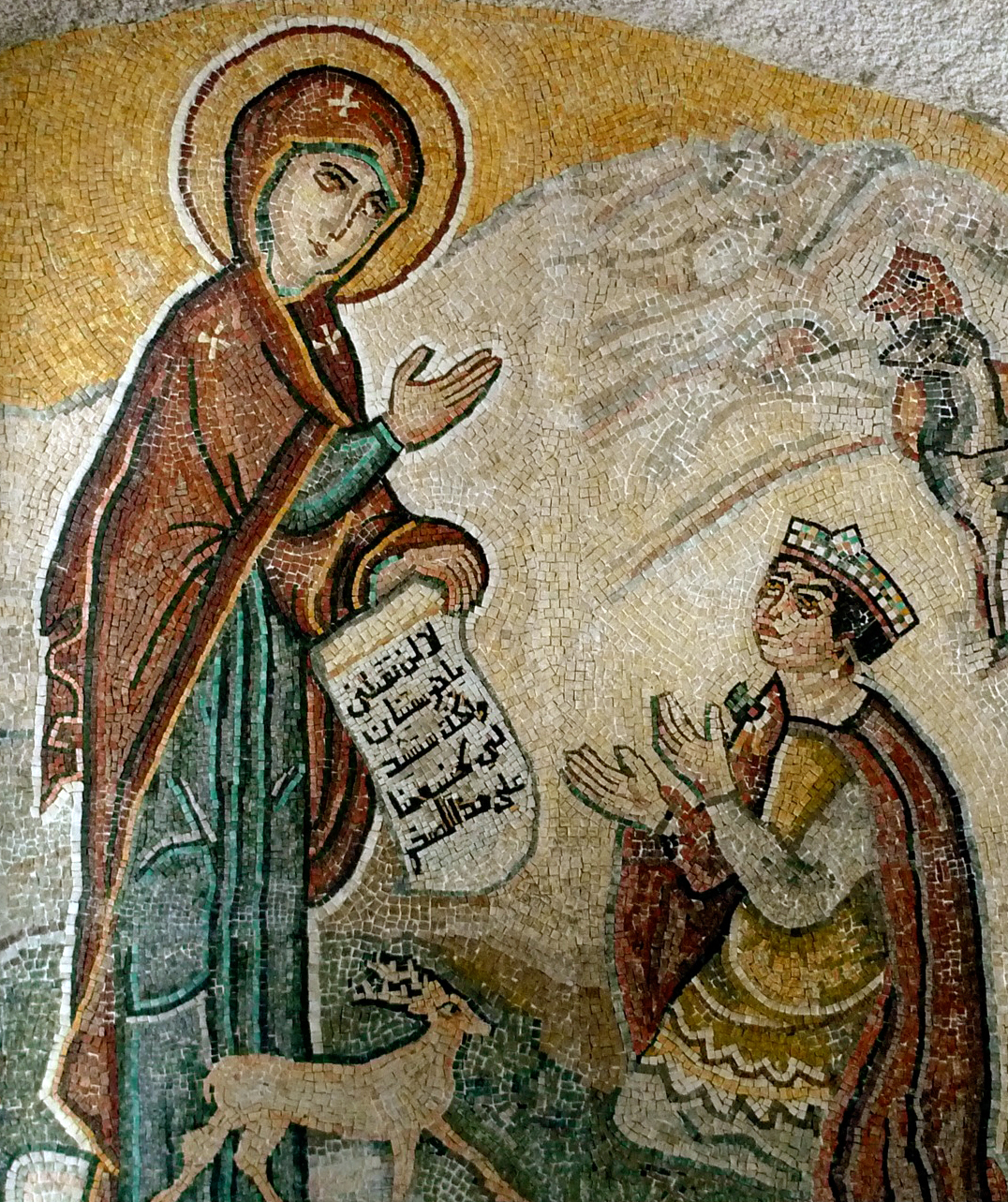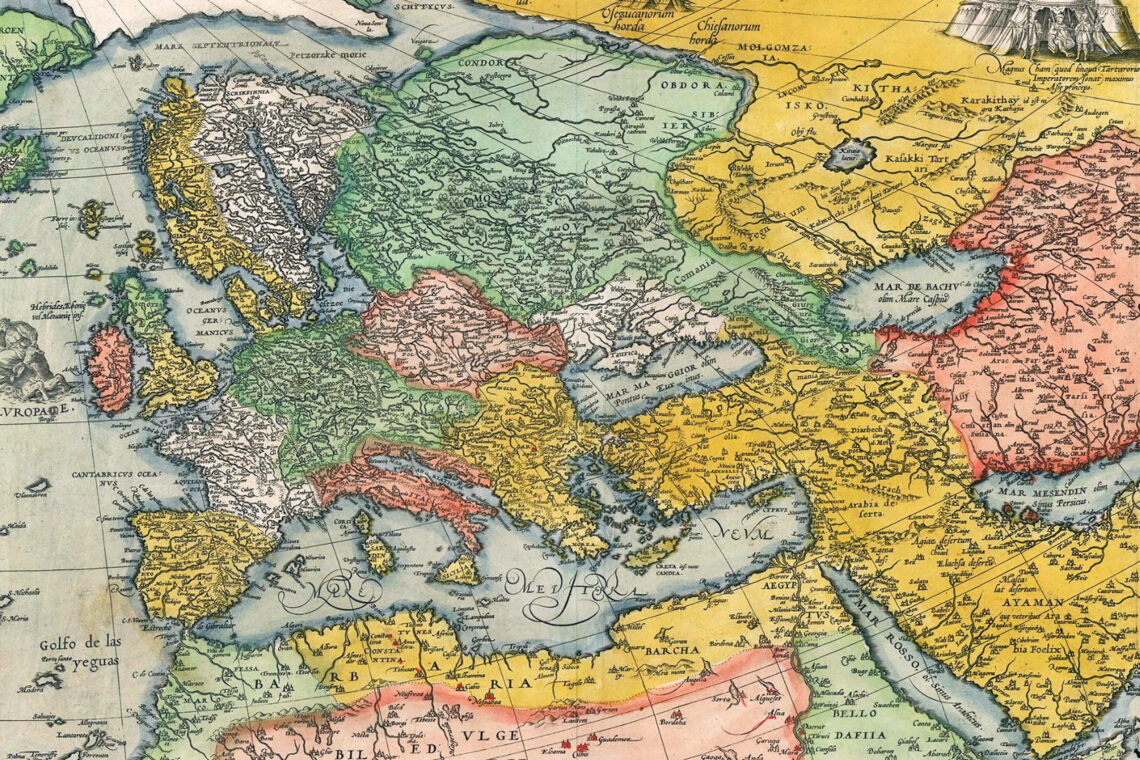Recently, Tawadros II, the Coptic pope of Egypt, said that “even during the darkest ages” of its history, his church was never subjected to the violence it is now suffering at the hands of Sunni Muslims. Maybe. But what is well known is that the fate of Egyptian Christianity and that of all Christians who found themselves under Muslim domination beginning in the 7th century when Islam emerged as a new religion hasn’t been an easy one.
It is true that the Koran periodically adopts a conciliatory attitude toward the “People of the Book,” but Islam is, in the end, categorically clear about who is right and who is wrong. Not only does Allah reject any religion that is not Islam, but the Koran also commands Muslims to “fight those among the ‘People of the Book’ who do not believe in Allah and the Last Day, who do not forbid what Allah and his messengers have forbidden and do not profess the true religion, till they pay the poll-tax (jizyah) out of hand and submissively.” The Christians’ off-and-on persecution has been a constant fact of life under Islamic rule; in fact, the notion of “genocide” was first inspired by the atrocities that befell Iraqi Christians in the 1920s, which came on the heels of the Turkish massacres of Armenians. As I am writing this, the Copts—a corruption of the word Aigyptos, whose original language goes back to the age of pyramids and which helped decipher the hieroglyphics in the 19th century—who make up some 10 percent of Egypt’s population of 90 million, are the only community of Christians left in any meaningful numbers. And, quite frankly, if Egypt doesn’t change, I wouldn’t bet on their long-term survival.
In the beginning, Sidney H. Griffith notes in The Church in the Shadow of the Mosque (2008), when Islam was still being formed out of Christian and Jewish doctrines, the fate of Christians under Muslim rule—some 50 percent of the world’s Christian population then—was tolerable. After all, Muslims were not the majorities everywhere, including in Mesopotamia, Syria and Palestine, even though their influence was mounting and pressure on non-Muslims was palpable. Unlike in Rome before the reign of Emperor Constantine, there was no serious persecution of Christians, except, perhaps, in individual cases of apostasy. In fact, Islam was so close to Christianity and Judaism that Christians considered the new Arabian religion a heresy and Muslims as “new Jews.”
The contempt that so many Muslims feel toward Christianity may very well be an expression of the proverbial narcissism of minor differences. Islam was born in a mostly Christian milieu (Syria-Palestine and later Iraq) and the Islamic world west of Iraq used at one time to be mostly Christian. In the 8th century, such Christians (mostly Jacobites and Nestorians, but there were others, too) used the ancient Aramaic terms Nasraye or Nazarenes to describe themselves and called Jesus Yeshua. In fact, Iraq remained home to a powerful and creative Christianity well into the Middle Ages—Tikrit, birthplace of Saddam Hussein, had a major Christian community.
Over time, Christians adopted Arabic for cultural and ecclesiastical purposes and debated their fellow Muslim subjects under the caliphate about which religion is right. The Koran itself, one must note, enters into such polemics with the “People of the Book,” as when it challenges them to imitate it if they think it is not of divine origin. This lively intellectual culture, including disputes about the inimitability of the Koran (`ijaz al qur’an), was still alive in Baghdad’s literary salons by the end of the 10th century, when the Andalusian Abu Abdellah Abu Ahmed ibn Mohammed ibn Sa`adi, author of Jawdhat al-Moqtabis, visited and reported with shock:
At the first session I attended I witnessed a meeting which included every kind of group: Sunnī Muslims and heretics, and all kinds of infidels: Majūs, materialists, atheists, Jews and Christians. Each group had a leader who would speak on its doctrine and debate about it. Whenever one of these leaders arrived, from whichever of the groups he came, the assembly rose up for him, standing on their feet until he would sit down, then they would take their seats after he was seated. When the meeting was jammed with participants, and they saw that no one else was expected, one of the infidels said, “You have all agreed to the debate, so the Muslims should not argue against us on the basis of the scripture, nor on the basis of the sayings of their prophet, since we put no credence in these things and we do not acknowledge him. Let us dispute with one another only on the basis of arguments from reason, and what observation and deduction will support.” Then they would all say, “Agreed.” Abū `Ūmar said, “When I heard that, I did not return to that meeting. Later someone told me there was to be another meeting for discussion, so I went to it and I found them engaging in the same practices as their colleagues. So I stopped going to the meetings of the disputants and I never went back.
The Christians of Islam were a great resource to Abbasid caliphs and provided the cultural capital that led to the flowering of Islamic civilization. They translated the works of Greeks and Persians through Syriac, Persian, and Coptic, and eventually into Arabic. They were the first to mention the Indian numbering system. The great translator and director of the Abbasid House of Wisdom, Hunayn Ibn Ishaq, was, of course, Christian. These Christians were so confident of their supremacy that, as late as the early 11th century, a bishop could tell a Muslim vizier that the Arabs got all their sciences from Syriac sources, making that language superior to Arabic. These Nasraye also kept a remarkably open mind about the interpretation of scripture, as when Solomon of Basra dismissed literal readings of the Bible with this comment:
The things which certain stupid men invent, who indulge their fancy, and give bodily form to the punishment of sinners and the reward of the just and righteous, and say that there is at the resurrection a reckoning and a pair of scales, the Church does not receive; but each one carries his light and his fire within him, and his heaviness and lightness is found in his own nature. Just as stone and iron naturally possess the property of falling to the earth, and as the air naturally ascends upward on account of its rarity and its lightness; so also in the resurrection, he that is heavy and lying in sins, his sins will bring him down; and he that is free from the rust of sin, his purity will make him rise in the scale.
Although Christianity disappeared from Morocco and the rest of North Africa after the expansion of Islam, it survived in Egypt and left a profound impact on Islam, whether in the shape and architecture of mosque (Byzantine), the use of the Ethiopian minbar for Friday prayers, the prostrations (ruk`at), the habit of veiling and seclusion of women, or fasting during Ramadan. The language of the Koran itself derives from Syriac and its contents echo Syriac liturgical practices. Christian monastics inspired Sufism with its dhikr and the wearing of wool. In fact, Islam’s great and controversial mystic or sufi, Mansur al-Hallaj, was emulating Christ before he was “literally crucified.” If we lose sight and forget about these Christian traditions, Muslims will never have a full understanding of their religion and how it was shaped.
This, at least, is what the prominent historian Philip Jenkins, in his masterful survey of the subject, The Lost History of Christianity (2008) wants us to keep in mind. “The connection between Islam and older Eastern forms of Christianity,” he writes, “is so intimate, in fact, as to raise unsettling questions for modern-day members of both faiths. Often, when faithful Christians complain about aspects of that alien religion [such as prostrations], they are in fact denouncing customs or beliefs that are deeply rooted within the most ancient forms of their own Christian faith. And while Muslims praise the prophet Jesus, few are aware of just how extensive a heritage they draw from the churches of Nasraye, the Nazarenes. Christianity and Islam haunt each other beyond the skills of the world’s greatest exorcists to expel.”
The Nasraye survived and even at times flourished after the rise of Islam, but by the 14th century, following the Latin Crusades in the late 11th century and the Mongol invasions in the 13th, Muslims turned on their Christian neighbors with merciless vengeance. The Copts in Egypt were forced to convert. As members of a tolerated minority called dhimmis, Christians had long been subjected to a humiliating second-class social status (such as wearing distinctive clothes and badges introduced by the Caliph Omar) and had known severe persecutions, but this was to be the decisive blow to the future existence in Muslim lands. Egyptian Copts were charged with all sorts of conspiracies against Muslims and were reduced to an embattled minority ever since. Meanwhile, in Asia Minor, the Turks raised the classic Christian city of Ephesus, killing or deporting all its Christian inhabitants. Nubia was dechristianized by the Mamluk sultan Baybars. In the 1360s, the Mongol Muslim Timur (Tamerlane) used to skulls of his victims to build pyramids. On May 29, 1453 the Ottomans captured Constantinople and Haga Sophia, the world’s largest church, was transformed into a mosque.
With Muslim conquests, Christianity was cut off from its original birthplace. As mentioned, the African church was quick to disappear, limited as it was to major urban centers and with no roots among the natives. Indigenous languages, such as Syrian, Coptic, Greek and Berber, were marginalized as Arabic became inextricably linked with Islam. “It was the victory of Arabic, “ wrote Peter Brown in The Rise of Western Christendom, “which opened the doors to Islamization.” Being reduced to a severely humiliated minority, subjected to the whims of the Muslim majority, many Christians converted to the new faith to make life easy for themselves and their families. Still, the atrocities and persecutions continued down to modern times. The Ottoman Turks engaged in widespread massacres in the Balkans and kidnapped Christian children for their corps of janissaries. In the 1860s, in an episode known as “madhabih al-sittin” (slaughterhouses of the sixties), Muslims and Druze launched pogroms against Maronite Christians, threatening to exterminate one of the oldest Christian communities in Syria and what would later become Lebanon.
Despite these tribulations, Christians represented some 11 percent of the Middle East population between Egypt and Iran in 1900. Around 400,000 people (or half of the population) living in Istanbul in 1911 were Christian. This number remained unchanged until 1920. Today, however, only around 4000 Christians are left in that Turkish city. The same story applies in other Middle Eastern countries. In 1915, Christians represented some 15 percent of Palestinians; today less than one percent of Palestinians are Christian.
As the Crusades and Mongol invasions have shown, conflict and wars always work against the Christian minorities under Islam. The First World War led to horrible atrocities against them, including the massacre of Armenians in 1915. A total of 1.5 million Eastern Christians were killed in the region at that time. In 1933, just one year after Iraq was created by the British, Muslims launched a genocidal attack on what was left of the Christians to punish them for their attempt to create an autonomous nation for themselves. One observer left this portrait:
Men, women and children were massacred wholesale most barbarously by rifle, revolver and machine gun fire. . . . Priests were killed and their bodies mutilated. Assyrian women were violated and killed. Priests and Assyrian young men were killed instantly after refusing forced conversion to Mohammadanism. . . . Pregnant women had their wombs cut and their babies destroyed.
The Polish lawyer Raphael Lemkin took note of this episode and later described acts of extermination against an ethnic, religious or social group, such as the Armenians and Assyrians, genocide. Thus, Jenkins tells us, “The modern concept of genocide as a uniquely horrible act demanding international sanctions has its roots in the thoroughly successful movements to eradicate Middle Eastern Christians.” After 2003, when the United States broke up Saddam Hussein’s state, there have been more killings and assassinations of Christians and their clergy. Soon, Christianity, like Judaism before it, will be practically eradicated from that country. The old Nestorian church of Iraq—now known as the Assyrian Church of the East—survives in Chicago, not in Iraq or the Middle East. We will probably never see a leader like the Chaldean Catholic Mikhail Yuhanna, known to us as Tariq Aziz.
The case of Aziz illustrates well the dilemma and futile hope of Christians under Islam. At the turn of the 20th century, the better educated and more prosperous Christians sought survival and equality through nationalism. But such a strategy seems to have been doomed from the start, since Muslims kept growing in numbers, while the Christians shrank through family planning and immigration. Now, only about 10 million Christians (mostly Copts) are left in the Middle East. In this vast ocean of Islam, in a line stretching from Morocco to India, the only serious minority that breaks this religious monotony is the State of Israel.
Islam built its foundation on Christian ideas but has since waged a ferocious war against Christians. This is the part of history most Muslims conveniently ignore. They recall the Crusades with great consternation, but no one remembers the hell Muslims inflicted on the nassara, a people with books older than the Koran.





Comments are moderated by the editor and may not appear on this discussion until they have been reviewed and deemed appropriate for posting. All information collected is handled in a manner consistent with our privacy policy.